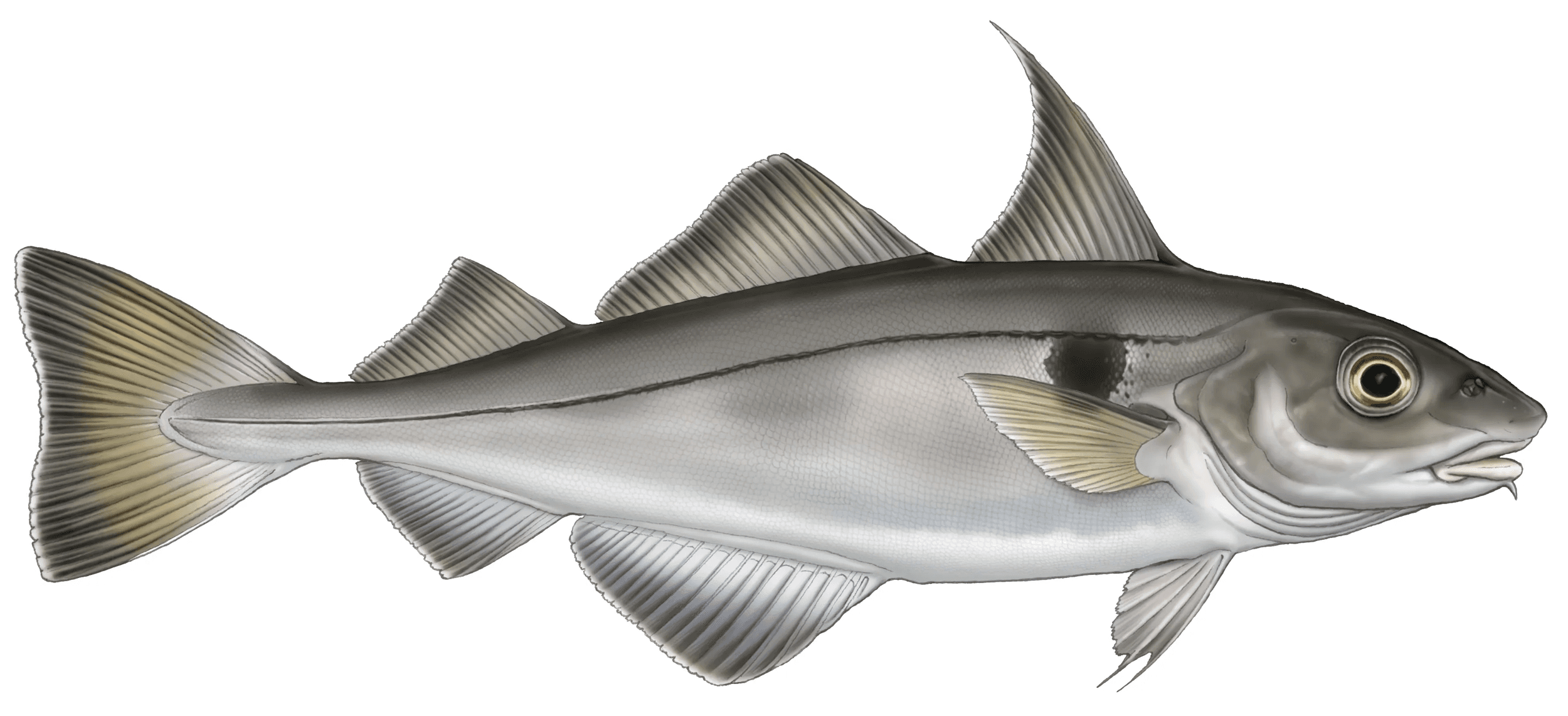Haddock
Haddock - Image courtesy of Seafish Public Media library.
Haddock - Scientific name - Melanogrammus aeglefinus
Conservation status
Haddock is very popular in the UK and in high commercial demand.
Melanogrammus aeglefinus is restricted to the North Atlantic Ocean and adjacent waters of the Arctic Ocean (IUCN)
The IUCN listed it as Least Concern in 2013.
The Marine Conservation Society(MCS) believe Haddock is generally a good option with the best choices from the North Sea and Iceland. They have 11 fishing areas rated as Good Choice and 7 In Need of Improvement.
They state that most haddock catches are by otter trawls, which are likely to cause some damage to the seabed. Their reviews refer to an abundance of fish, but they regularly mention fishing pressure as being too high and ‘Bycatch’ being ‘a concern’ ‘especially of cod and whiting’.
Haddock is on the Greenpeace Red List because some Haddock is caught using beam trawling.
In contrast, many Haddock fisheries have been certified as sustainable by the Marine Stewardship Council. All seven stocks assessed in the eastern Atlantic are currently considered by ICES to be harvested sustainably.
Overview
Haddock is a saltwater ray-finned fish from the family Gadidae, which include Cod. It is found in the North Atlantic Ocean, where it is an important species for fisheries, especially in northern Europe, where it is marketed fresh, frozen and smoked.
Haddock has an elongated tapering body shape. The upper side of the haddock's body varies in colour from dark grey brown to nearly black while the lower part of the body is dull silvery white. It also has a distinctive oval black blotch or ‘thumbprint’, sometimes called the ‘Devil's thumbprint’. They are smaller than cod, with most landed haddock in the UK ranging from 30 to 70 cm in length. They live for 10 years or more.
The Haddock is demersal, meaning it lives at the bottom of the ocean often in the mud of the seabed. They are found in deep waters. There are populations on either side of the north Atlantic but it is more abundant in the eastern Atlantic. Haddock is most abundant north of the English Channel with the largest stocks living in the North Sea, off the Faroe Islands, off Iceland and the coast of Norway.
Their diet consists of a variety of bottom-dwelling organisms, including crustaceans (like shrimp and crabs), worms, molluscs, and smaller fish. Haddock are prey for larger fish like cod, pollock, cusk, and hakes, as well as spiny dogfish, skates, and even grey seals.
Haddock is a versatile white fish commonly used in fish and chips as well as a variety of other dishes. It can be fried, baked, poached, or grilled. Smoked Haddock is particularly popular.
Additional notes on Haddock sustainability…
On the positive side Nigel Edwards comments that Haddock in the North Sea, West of Scotland, and Skagerrak is not overfished and not subject to overfishing. Spawning-stock biomass (SSB) declined from around 450,000 tonnes in the 1970s to fall below the level at which reproduction might be impaired in the 1990s. After recovering to nearly 400,000t in the early 2000s, it again fell and was below the level at which reproduction might be impaired for most of the last 20 years. However, the SSB has dramatically increased from around 89,800t in 2019 to 680,608t in 2024. It is now 246% of the target level and therefore is not in an overfished state.
Sources
Wikipaedia - https://en.wikipedia.org/wiki/Haddock
Marine Conservation Society - https://www.mcsuk.org/goodfishguide/species/haddock/?search=haddock
IUCN – https://www.iucnredlist.org/species/13045/3406968
Greenpeace - http://www.greenpeace-fishforlife.50webs.com/redlists.html
